*NURSING > CASE STUDY > NR-603 Week 2 Case Discussion: Pulmonary – Part 2 Follow up Visit (GRADED A) (All)
NR-603 Week 2 Case Discussion: Pulmonary – Part 2 Follow up Visit (GRADED A)
Document Content and Description Below
NR-603 Week 2 Case Discussion: Pulmonary – Part 2 Follow up Visit (GRADED A) Week Two: Part Two: Case Study Follow Up Visit Discussion Chamberlain College of... Nursing Influenza A is a virus that can mutate quickly which makes treatment and prevention difficult for providers. Throughout history, this virus has changed after the initial vaccine was administered for the flu season and has caused major flu outbreaks across the country. Patients who are immunocompromised, like Michelle with asthma, pregnant women, geriatric, and young infants can be severely affected by the flu. Education about yearly vaccinations and prevention is essential for providers to stress with their patients (Paules & Subbarao, 2017). Michelle has been tested positive for Influenza A and is positive for symptoms. Influenza is self-limiting for most healthy patients. Antipyretics, anti-inflammatory agents and increased fluids will be suggested for Michelle. She will be able to return to work within twenty hours after her fever has subsided. The testing conducted on Michelle consisted of an influenza nasal swab. The nurse will use an applicator and swab to collect a specimen. The applicator will be inserted in the nare while gently rotating collecting mucus. The applicator will then be inserted back into the collection container and then tested. The test will take about fifteen minutes to result, indicating whether the patient is positive or negative for influenza (CDC, 2019b). She is borderline within the time frame for receiving antivirals but will be prescribed the medications because of her history of asthma. Antivirals should be initiated within 48 hours and have shown that the mortality rate has been reduced by 52%. Currently, secondary bacterial infection is not suspected. Therefore, she will not need an antibiotic to treat that illness. This is supported by the lack of signs of an infection. Her sputum is white, and her cough is productive. If the color of secretions were green and an ear infection is suspected than antibiotics will be started (Ghebrehewet, MacPherson, & Ho, 2016). Acetaminophen is common over the counter antipyretic used to help reduce fever. The mechanism of actions of acetaminophen works directly on the heat-regulating center of the hypothalamus. The drug is metabolized in the liver; therefore will have to be monitored in patients who have liver disease. The patient should also not exceed more than six pills in twenty hours due to liver toxicity (Epocrates, 2019c). Rx: Tylenol extra strength (acetaminophen extra strength) 500mg Sig: Take one to two tablets by mouth every four to six hours. Ibuprophen is a common over the counter anti-inflammatory used in tandem with acetaminophen to reduce fevers. The mechanism of action of ibuprofen works directly by blocking the production of prostaglandins, substances that the body releases in response to illness and injury. These prostaglandins are released in the brain and cause a fever. Ibuprofen can also help reduce the body aches involved with flu by blocking prostaglandins that cause inflammation and pain (Epocrates, 2019a). RX: Advil (ibuprofen) 400 mg Sig: Take one pill every four hours or two pills every six to eight hours. Oseltamivir is a common antiviral used to treat the flu. The mechanism of actions of oseltamivir inhibits influenza neuraminidase. This medication should be administered within forty-eight hours of initial symptoms. This medication can be purchased as a generic which will reduce the cost. The antiviral drug zanamivir should not be used in patients with asthma because it increases the risk of wheezing (CDC, 2019a; Epocrates, 2019b). Rx: Tamiflu (oseltamivir) 75 mg Sig: Take one capsule twice daily for five days Michelle will be advised to use her inhalers at home for respiratory symptoms. She will also receive an albuterol treatment in office to help with the wheezes heard on auscultation. Her vitals are relatively stable except for lower oxygen saturation and high temperatures(CDC, 2019a). Michelle does not have any warning signs to warrant emergency medical care. The signs for adults are difficulty breathing or shortness of breath, persistent pain or pressure in the chest or abdomen, persistent dizziness, confusion, inability to arouse, seizures, not urinating, severe muscle pain weakness or unsteadiness, fever or cough that improve but then return or worsen, and or worsening of chronic medical conditions. She exhibits a lower oxygen saturation of 94%, a fever of 101.4, and a history of asthma. She is positive for inspiratory/expiratory wheezes which can be treated by albuterol treatment. Otherwise, Michelle's symptoms are unremarkable and can be treated, outpatient. She does not need a referral to a pulmonologist at this time because her asthma is under control. If her chronic illness persists or worsen than admission to the hospital will be warranted. The hospitalist can consult the pulmonologist about suggesting treatment plans for Michelle (CDC, 2019a). Michelle should call back in one week to report how she is feeling. She will be advised to avoid close contact of others who are not affected by the flu. She can return to work twenty-four hours after the fevers have stopped. She will be instructed to rest and ingest the appropriate amount of fluids to stay hydrated. The provider will educate Michell on the importance of obtaining flu vaccines every year, especially since she has a history of asthma (Ghebrehewet, MacPherson, & Ho, 2016). Influenza A can cause many problems for a patient infected. It is essential for people to report symptoms to their provider immediately so testing and treatment can be started. A positive result will elicit providers to order antivirals, anti-inflammatory, and antipyretic for the patient. Follow up, and education revoles around controlling symptoms and preventing complications. In the end, Michelle will recover if she follows this treatment plan. References CDC. (2019a). Flu and People with Asthma | CDC. Retrieved from https://www.cdc.gov/flu/asthma/index.htm CDC. (2019b). Rapid Diagnostic Testing for Influenza: Information for Clinical Laboratory Directors. Retrieved from https://www.cdc.gov/flu/professionals/diagnosis/rapidlab.htm Epocrates. (2019). Advil. Retrieved from https://online.epocrates.com/drugs/otcs/433010/Advil/Monograph Epocrates. (2019). Tamiflu. Retrieved from https://online.epocrates.com/drugs/217110/Tamiflu/Monograph Epocrates. (2019). Tylenol Extra Strength. Retrieved from https://online.epocrates.com/drugs/otcs/514410/Tylenol-Extra- Strength/Monograph Ghebrehewet, S., MacPherson, P., & Ho, A. (2016). Influenza. BMJ, 355(6258), 1-10. Retrieved from https://doi.org/10.1136/bmj.i6258 Paules, C., & Subbarao, K. (2017). Influenza. The Lancet, 390(10095), P697-708. Retrieved from https://doi.org/10.1016/S0140-6736(17)30129-0 [Show More]
Last updated: 1 year ago
Preview 1 out of 4 pages
Instant download

Buy this document to get the full access instantly
Instant Download Access after purchase
Add to cartInstant download
Reviews( 0 )
Document information
Connected school, study & course
About the document
Uploaded On
Sep 07, 2021
Number of pages
4
Written in
Additional information
This document has been written for:
Uploaded
Sep 07, 2021
Downloads
0
Views
88





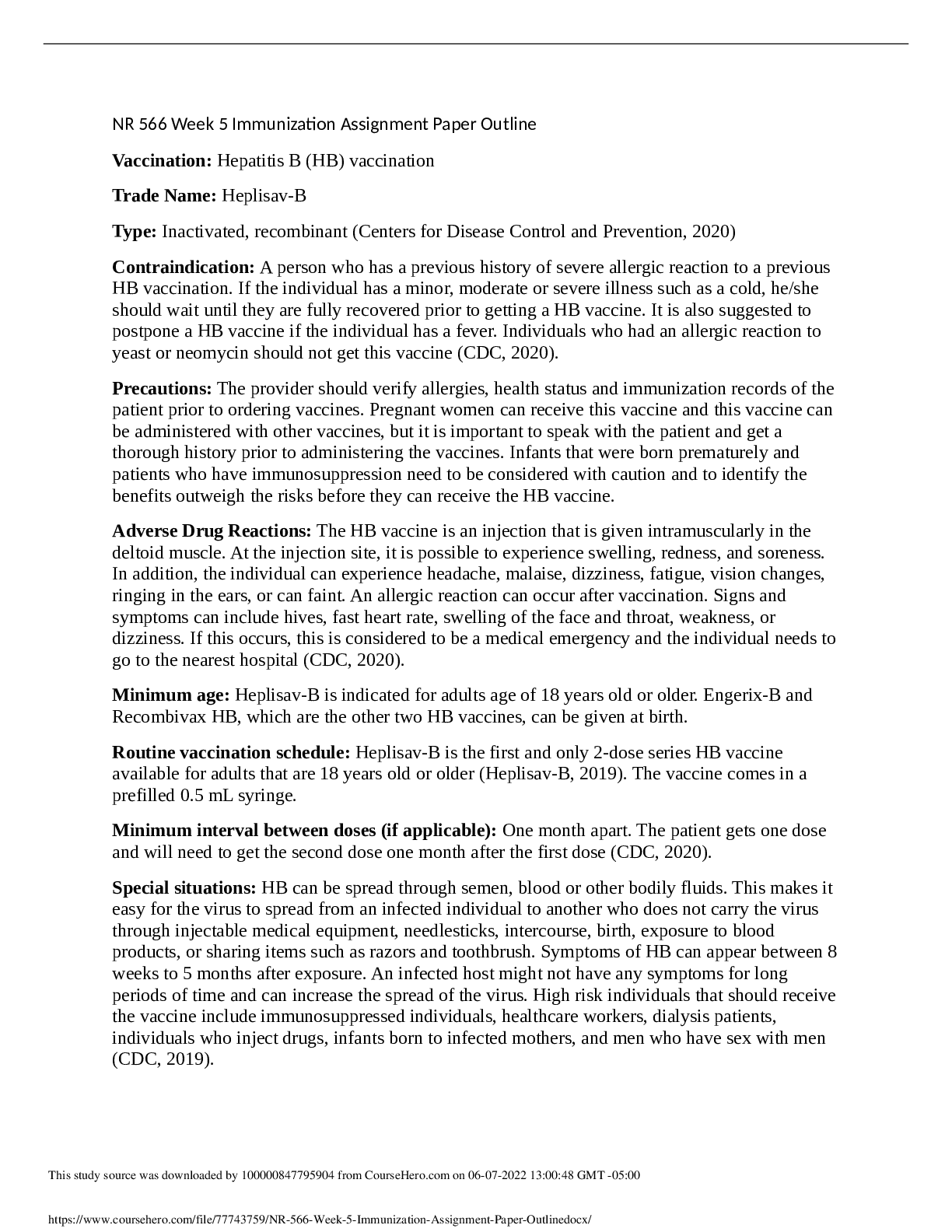
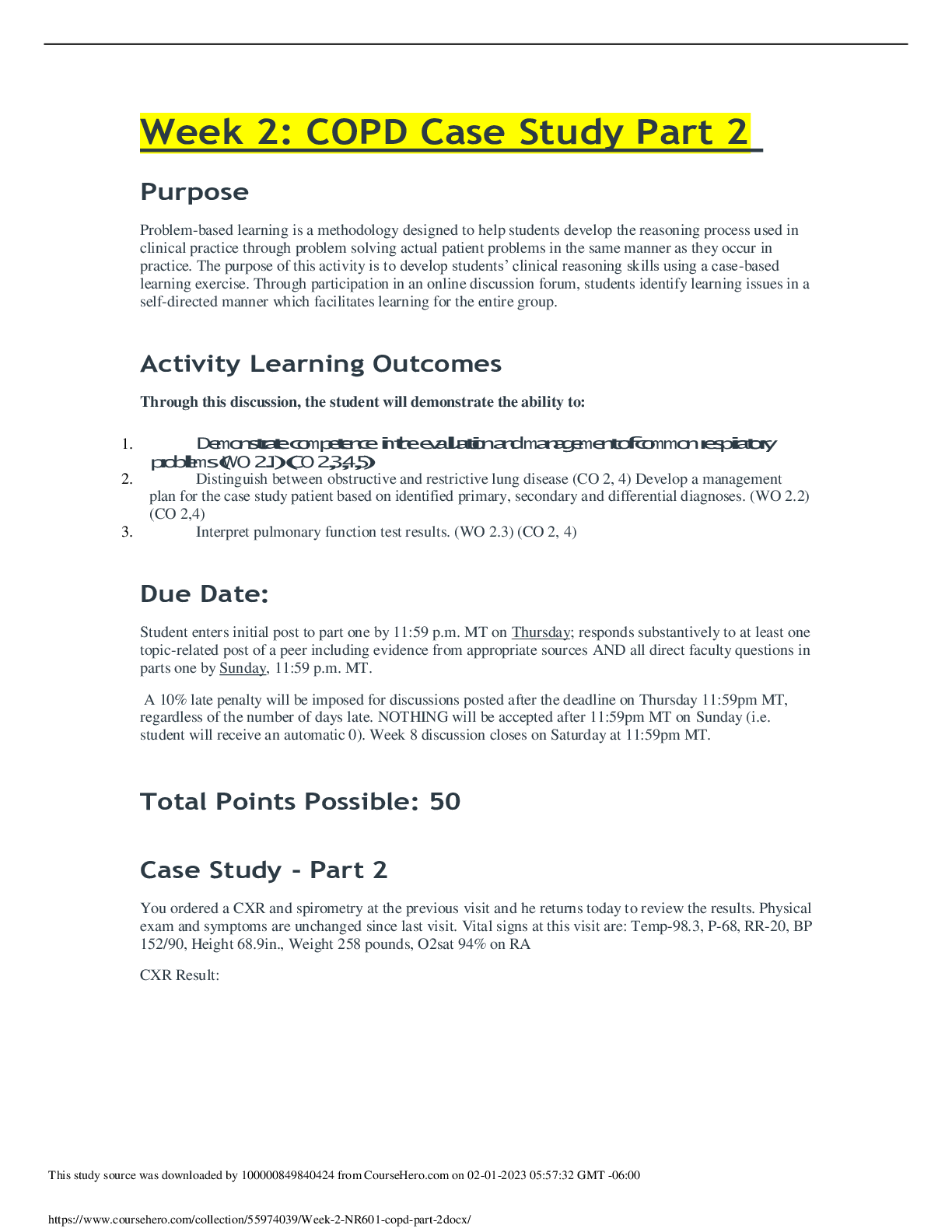
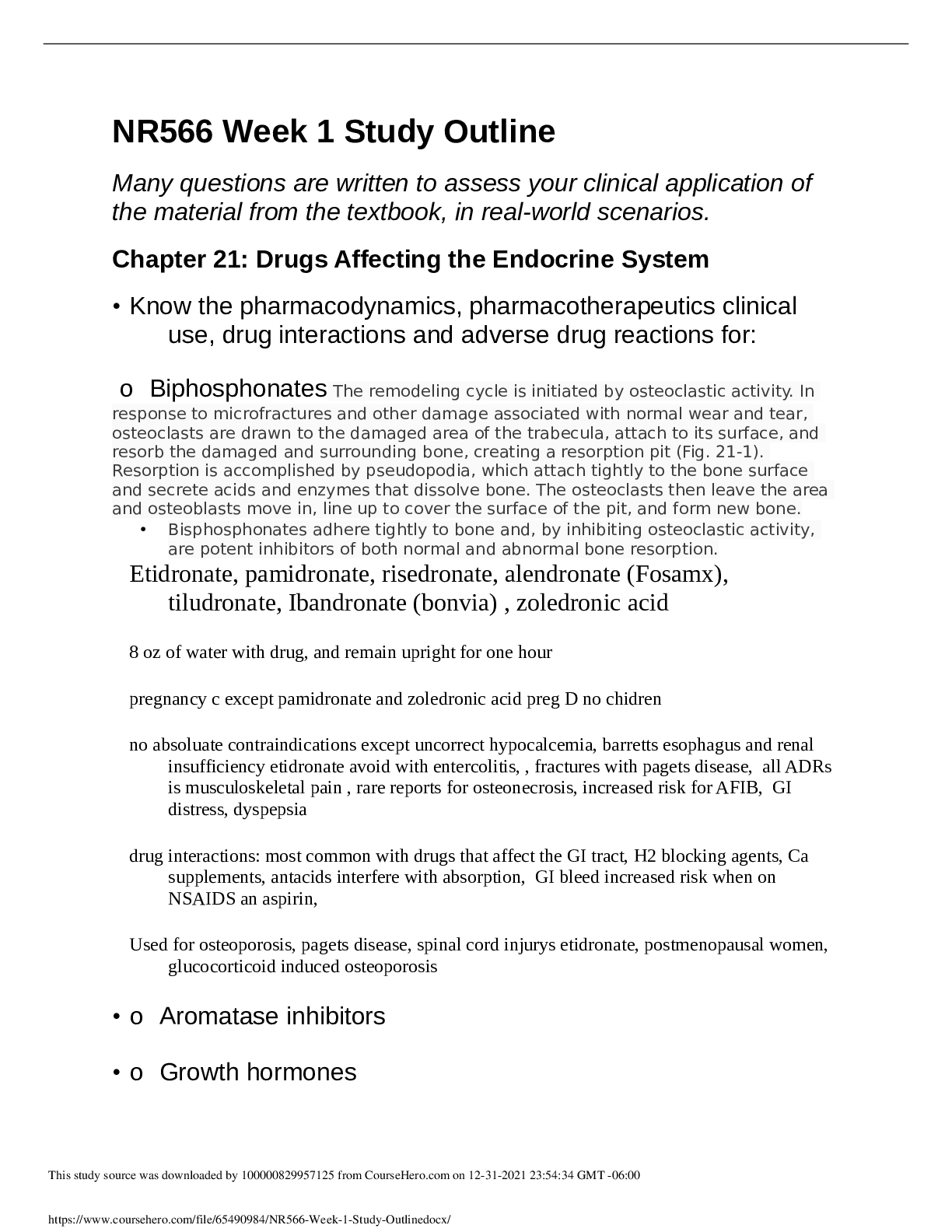

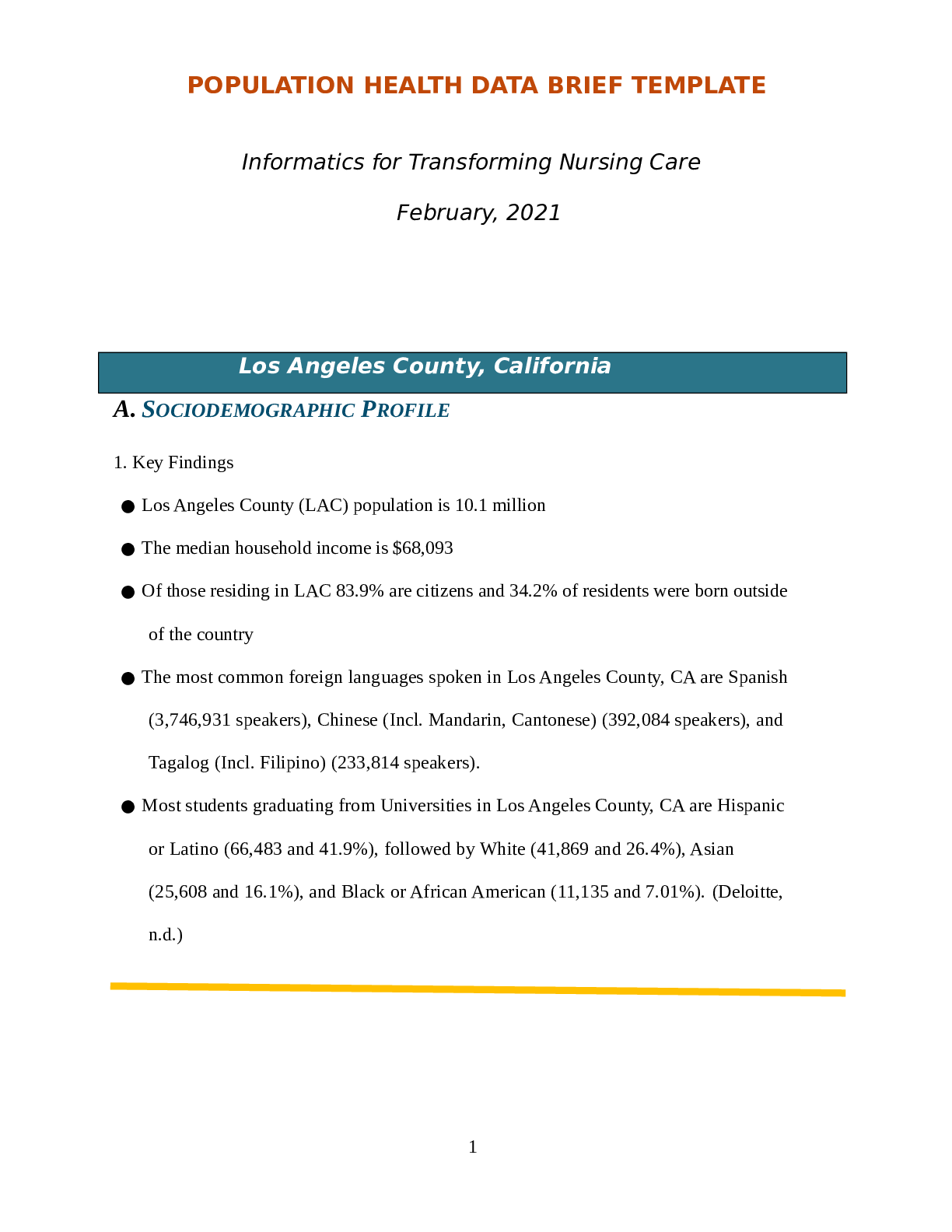

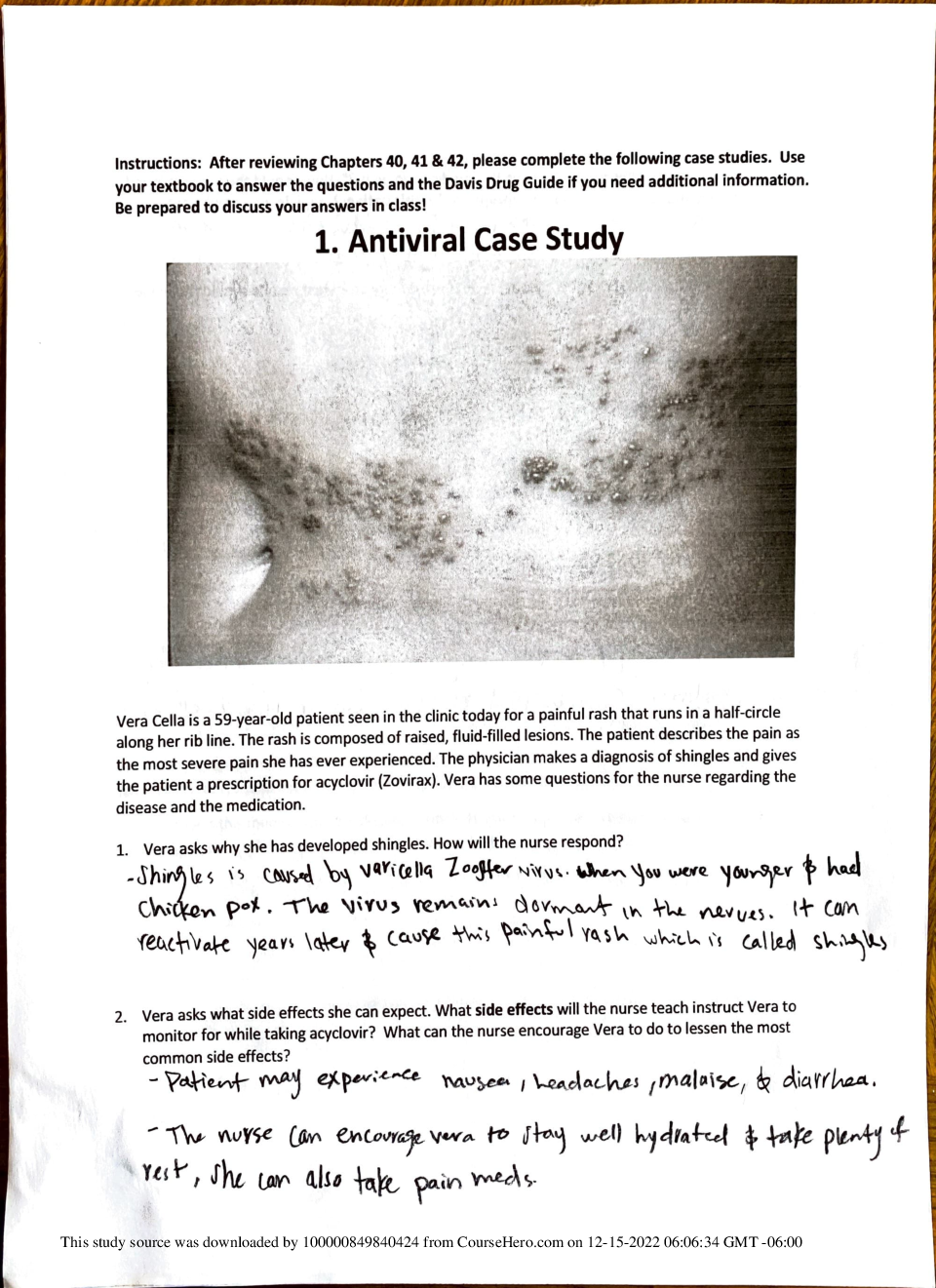



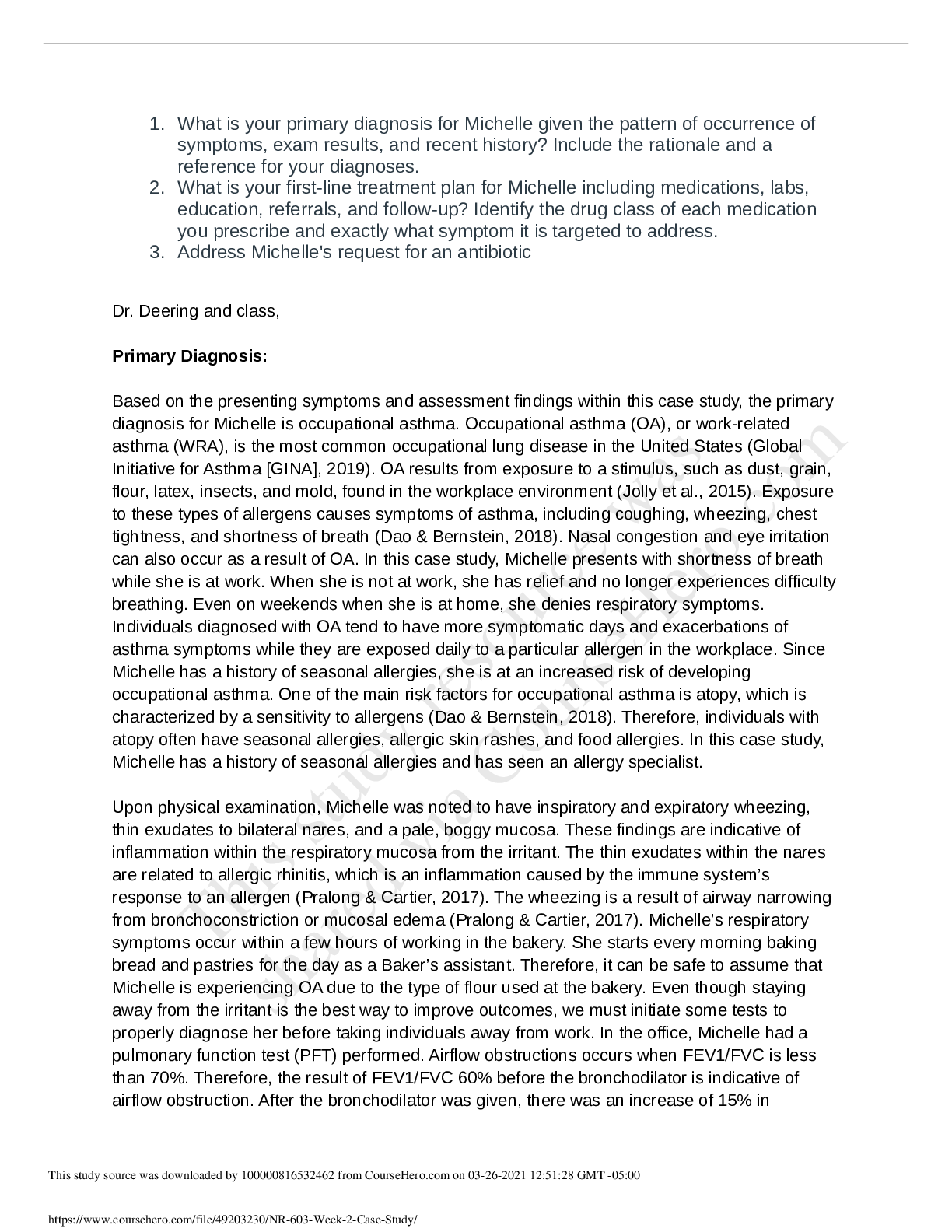


.png)



